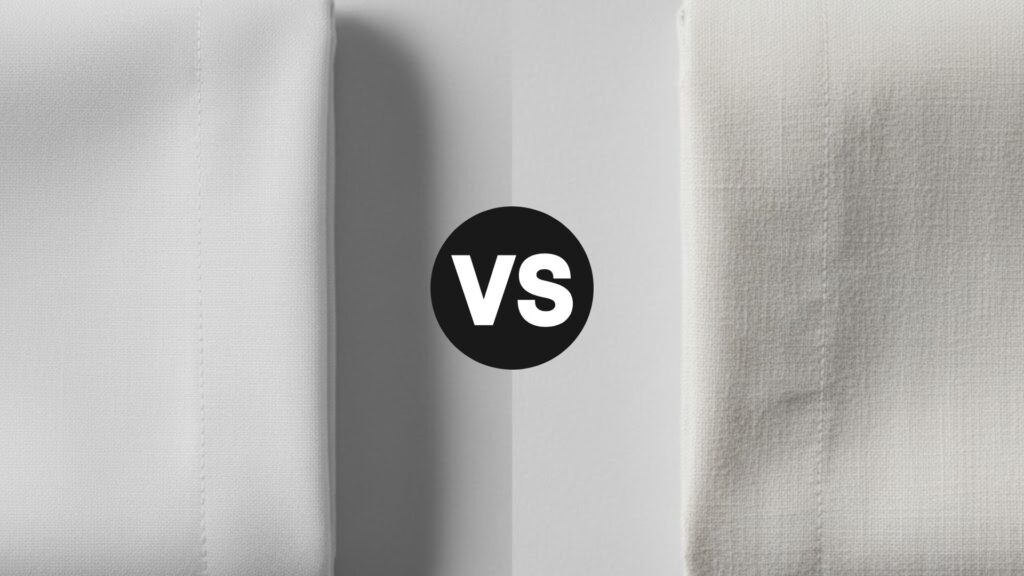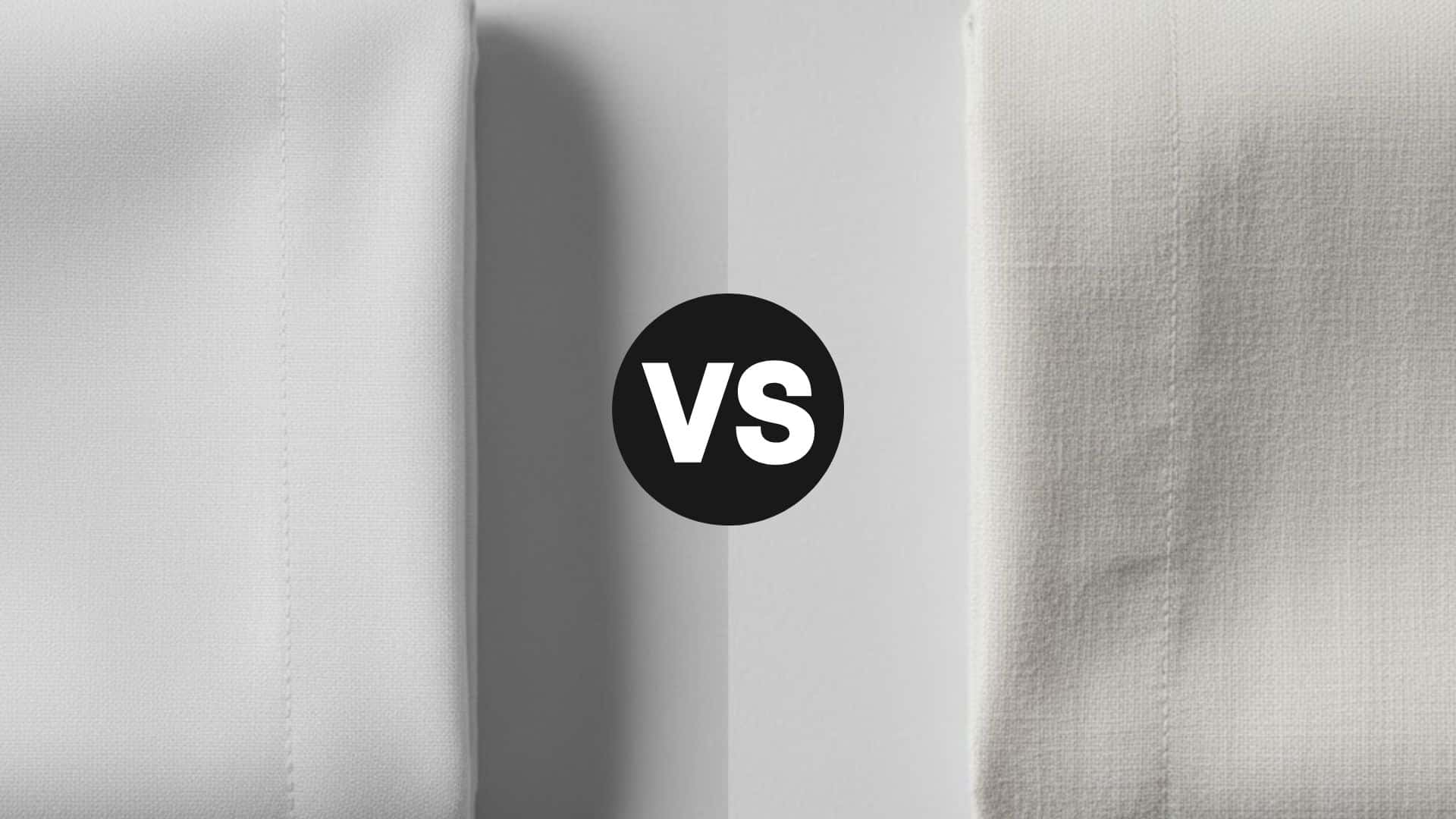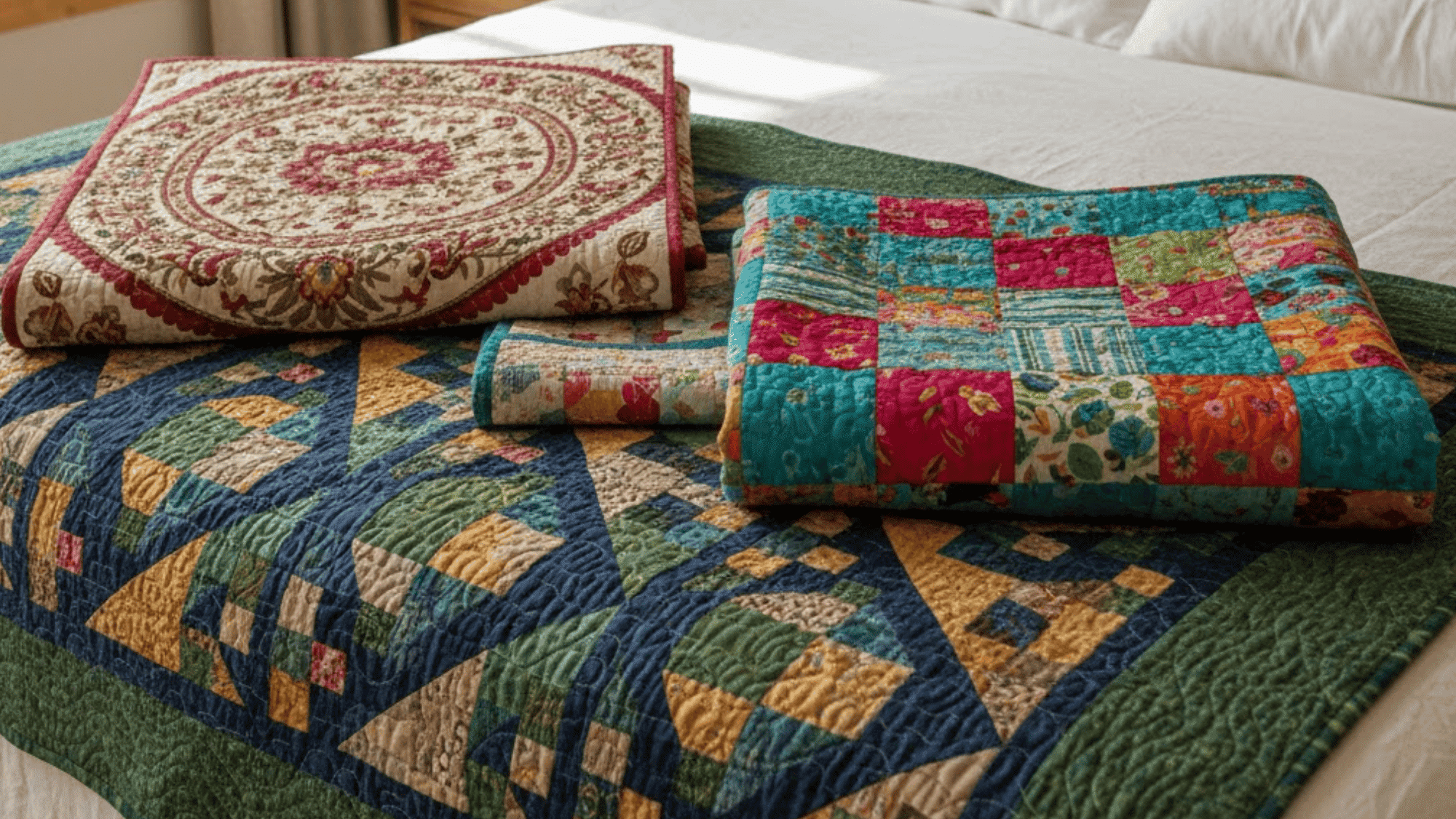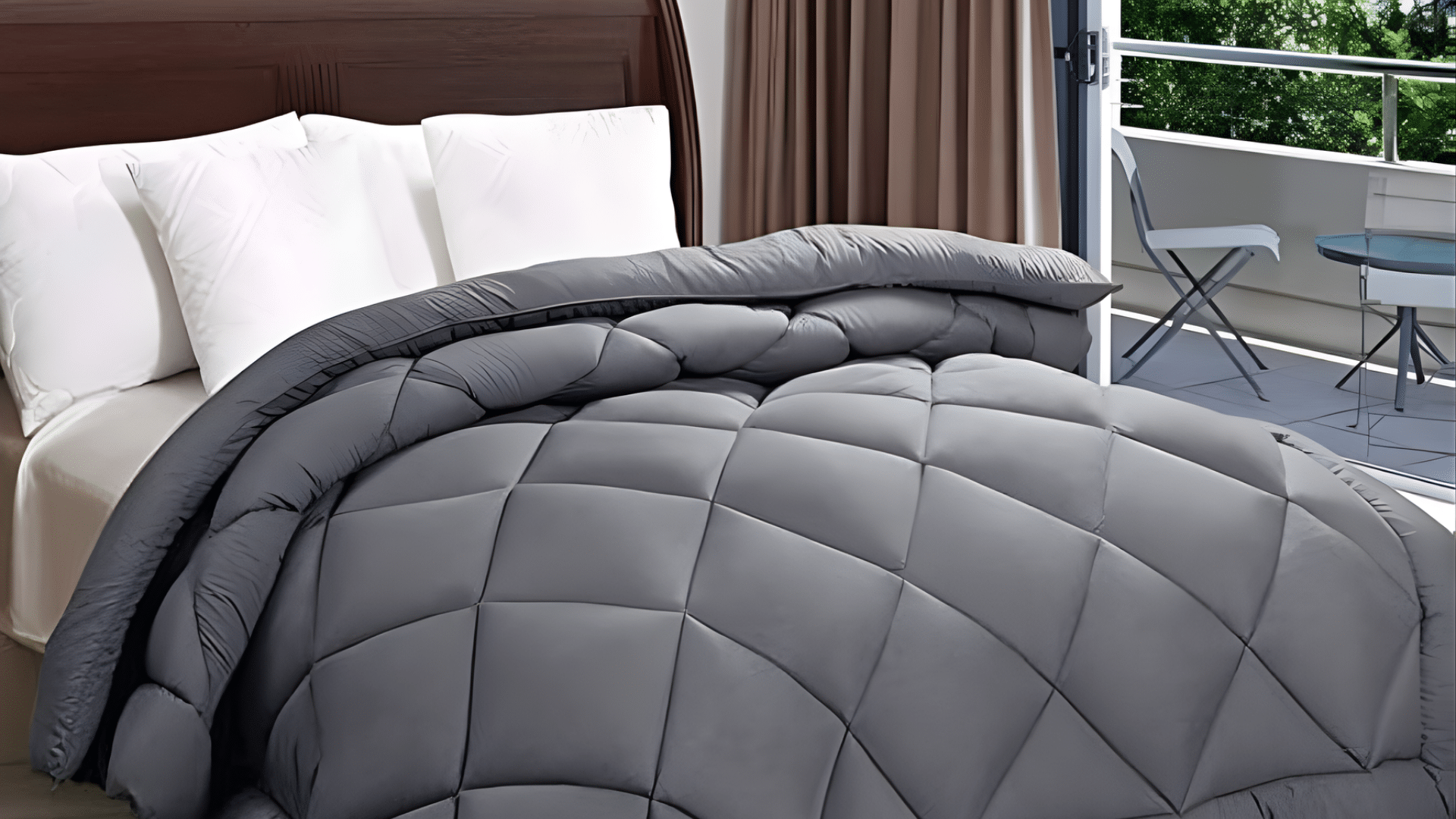Have you ever noticed how the fabric of your sheets can completely change how well you sleep at night? The debate around microfiber sheets vs cotton sheets comes up often because both have their loyal fans.
Each fabric brings a different sleep experience, and what works best depends on what feels right for you.
Some people care about breathability, while others just want sheets that are easy to care for. I’ve spent plenty of time testing both, and the differences are clearer than you might think.
If you’ve been thinking about which one suits your comfort needs, keep reading; your perfect sheet choice might surprise you.
What Are Microfiber Sheets?
Microfiber sheets are made from very fine synthetic fibers like polyester or nylon. These fibers are tightly woven, giving the fabric a smooth and silky texture.
The sheets feel lightweight and soft, often compared to satin. Because the fibers are so thin, microfiber sheets are thinner yet still strong.
They’re popular for bedding because they resist wrinkles, dry quickly, and are easy to care for. Many people like them because they stay neat and don’t need much ironing.
However, microfiber sheets don’t breathe as well as natural fabrics, so they can feel warm. Still, they’re affordable, practical, and long-lasting for everyday use.
What Are Cotton Sheets?
Cotton sheets are made from the soft fibers of the cotton plant, a natural material that’s been used for centuries. The fibers are spun into threads and then woven into smooth, breathable fabric.
There are different kinds of cotton, like Egyptian, Pima, and organic, each known for its quality and feel. These sheets are popular because they’re soft, cool, and gentle on your skin.
Many people love cotton because it feels natural and comfortable in every season. However, cotton sheets can wrinkle easily and often cost more than synthetic options. Still, their comfort and durability make them a favorite among many households.
Microfiber Sheets vs Cotton Sheets: Key Differences

I’ve noticed that microfiber and cotton sheets each bring their own comfort, care, and feel to the bed. To help you decide which one suits you best, I’ll break down their key differences below:
1. Comfort and Feel
Cotton sheets feel crisp, breathable, and cool, giving a light, refreshing touch that’s perfect for warmer nights. Microfiber sheets feel smooth, soft, and slightly silky, creating a cozy, snug feeling in cooler weather.
Cotton suits those who prefer natural textures, while microfiber appeals to sleepers who like a sleek, soft surface that feels polished and warm.
2. Breathability and Temperature Control
Cotton sheets allow air to flow easily, keeping you cool and dry even on hot nights. Microfiber tends to trap heat, which can make it warmer and cozier during colder months.
Hot sleepers usually prefer cotton for its cooling nature, while cold sleepers enjoy microfiber for the consistent warmth it provides throughout the night.
3. Durability and Lifespan
Microfiber sheets hold up well over time, resisting wrinkles, shrinking, and pilling even after many washes. Cotton sheets are also durable but may thin or fade faster if not cared for properly.
High-quality cotton with proper washing can last for years. Microfiber’s synthetic fibers give it extra toughness, making it ideal for heavy or daily use.
4. Maintenance and Care
Microfiber sheets are simple to care for since they dry quickly and don’t need ironing. However, they can attract lint and static.
Cotton sheets need more care because they can shrink or wrinkle in hot water. Washing cotton in cold water and drying on low heat helps it stay soft, fresh, and long-lasting.
5. Moisture and Allergen Control
Cotton absorbs moisture naturally, keeping you cool and dry throughout the night. Microfiber wicks away moisture but can hold heat, which may not suit everyone.
For allergy control, microfiber’s tight weave blocks dust mites, while cotton’s natural fibers are better for sensitive skin. Both can help with comfort depending on personal needs and climate.
6. Environmental Impact
Cotton is natural, renewable, and biodegradable, but its farming often uses lots of water and pesticides. Microfiber, made from synthetic materials like polyester, is less eco-friendly and can release microplastics during washing.
Still, eco-conscious options exist, such as organic cotton or recycled microfiber. Choosing sustainably made fabrics helps reduce your environmental footprint while enjoying quality bedding.
Cost Comparison of Cotton and Microfiber Sheets
Polyester fabric costs around$3 to $25 per yard depending on quality and type. Typical prices for polyester yarn are about $2.04 per kilogram. Polyester is more affordable upfront and often found in cheaper activewear and everyday items.
Cotton fabric prices range widely from $4 to $25 per yard. Common types like cotton broadcloth usually cost $5 to $10 per yard, while premium or organic cotton can cost up to $25 per yard. Cotton yarn prices are about $3.12 per kilogram.
Cotton costs more initially but lasts longer when cared for. Spending more on cotton makes sense if you want durability and comfort over time. Polyester is better for a lower budget and easy care.
NOTE: The prices mentioned are estimated costs and may vary depending on quality, brand, region, and current market trends.
Which One Should You Choose: Cotton or Microfiber Sheets?
I get that choosing between microfiber and cotton sheets can be confusing, especially when both seem to have their perks. It really comes down to your sleeping habits and what matters most to you. Here’s how I’d decide between the two:
- For those who sleep warm: Go with cotton because it stays cool and lets air move freely throughout the night.
- For those who feel cold at night: Microfiber works better since it traps warmth and keeps you cozy in cooler weather.
- For those who want simple upkeep: Microfiber is quick to wash, dries fast, and doesn’t need much effort to stay fresh.
- For those who prefer natural fabrics: Cotton is the right pick since it’s plant-based and feels soft and gentle on the skin.
Both materials work well in different situations, so consider your comfort needs and pick the one that best fits your sleep style.
Eco-Friendly Alternatives to Cotton and Microfiber Sheets
If you care about the environment, several sustainable bedding options exist beyond regular cotton and microfiber. Here’s what each eco-friendly alternative offers:
| Fabric Type | How It’s Eco-Friendly | Key Benefits |
|---|---|---|
| Organic Cotton | Grown without harmful pesticides or chemicals, making it safer for the planet | Feels soft and breathable just like regular cotton but with less environmental damage |
| Bamboo | Grows quickly without needing much water or pesticides for cultivation | Feels silky smooth and naturally resists bacteria, keeping your bed fresher longer |
| Recycled Microfiber | Uses plastic bottles and other waste materials to create new fabric | Reduces pollution and waste while still providing durable, affordable bedding |
I believe each of these options helps reduce your environmental impact while providing comfortable sleep. Your choice can make a real difference for the planet’s future and your health.
That’s a Wrap
Choosing between microfiber sheets vs cotton really comes down to your comfort, lifestyle, and sleeping habits.
Both types offer unique benefits, but the right one depends on what matters most when you rest. You might prefer something that feels light and crisp or something smooth and cozy; either way, your sleep comfort comes first.
It’s worth trying both to see which one truly fits your routine. I’d love to hear what kind of sheets you like and why.
Drop your thoughts or questions in the comments below; your insight might help someone else find their perfect bedding, too.









